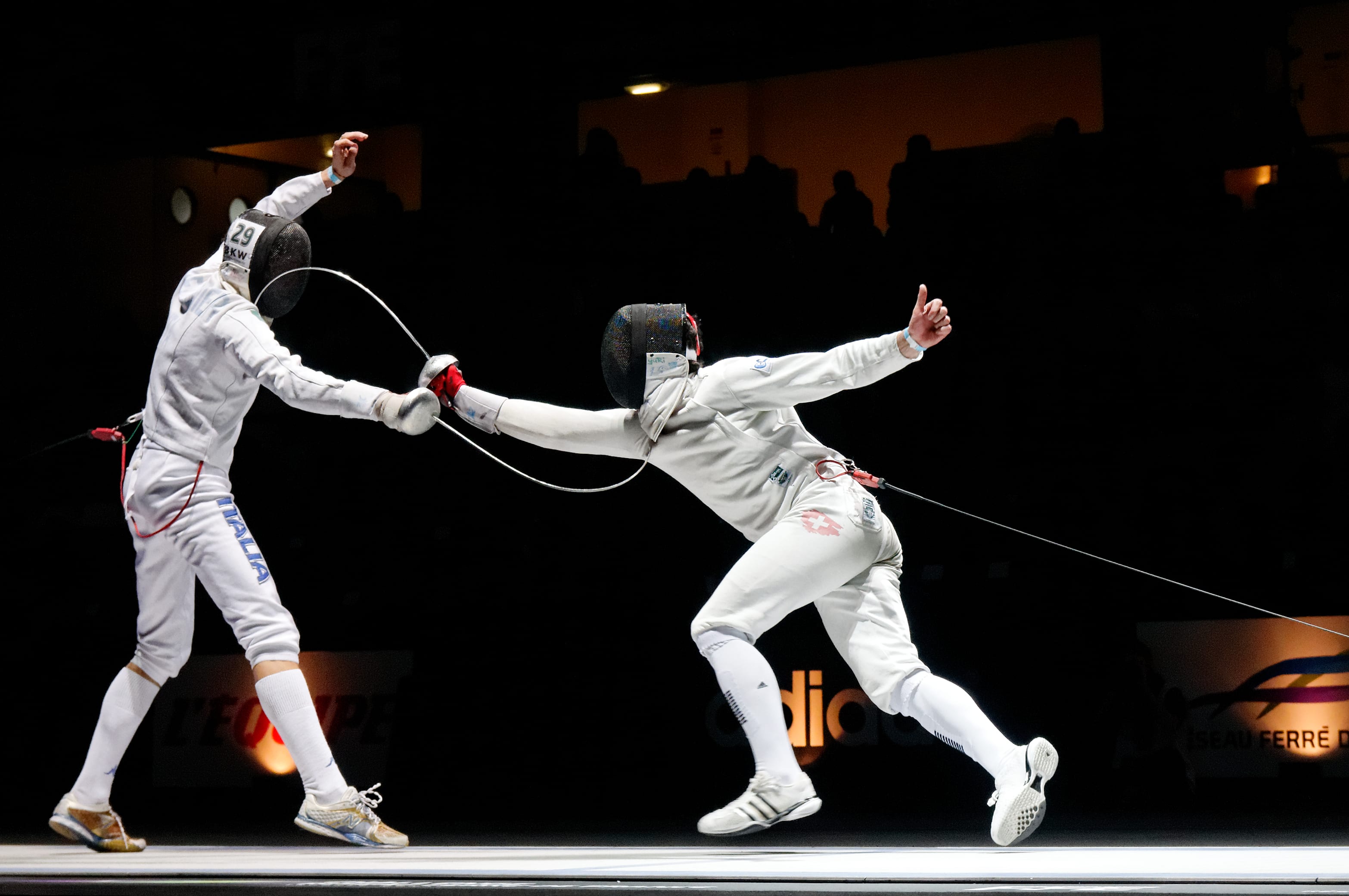Techniques or actions in fencing can be divided into two categories: offensive and defensive. Techniques or actions used with the intention of landing a hit on your opponent are offensive. those used to protect against a hit or obtain the “right of way” are defensive, but some techniques or actions can fall under either category.
Offensive:
Attack – Also known as a thrust, this is a basic fencing technique consisting of extending the sword arm to declare an attack and attempt to land a valid touch upon the opponent’s target area. In sabre fencing, attacks can also be made with a cutting motion.
Feint – An attack with the purpose of provoking the opponent to respond.
Lunge – A forwards thrust that extends the front leg in a slight kicking motion in order to propel the body forwards with the back leg.
Beat Attack (can also be defensive) – In foil and sabre fencing, the attacker beats the opponent’s blade to gain “right of way” and then continues the attack against the target area. In épée fencing, the attacker beats the opponent’s blade with the intention of disturbing their aim and therefore scoring with a single light (electric fencing uses lights on the target areas to indicate a score).
Disengage – This is when the attacker begins in one direction, but then quickly moves the point of their blade downwards in a semi-circle to attack a different location. This is obviously used to trick the opponent and cause them to block in the wrong direction.
Continuation of Attack – A typical épée fencing action of making a second attack immediately after the first attack is parried.
Remise – A second attack immediately after the first has missed or been parried. In foil or sabre, a remise is considered to have lost “right of way”, and the defender’s riposte will always score instead of the remise.
Flick – A technique which is primarily used in foil fencing. It takes advantage of the extreme flexibility of the foil blade and uses it like a whip, bending the blade so that it curves over and strikes the opponent with the point.
Defensive:
Parry – A basic defence technique that blocks the opponent’s weapon whilst it is preparing or executing an attack to deflect the blade away from the fencer’s valid target area and to give the fencer “right of way” (in foil and sabre fencing only).
Circle Parry – A parry where the blade is twisted in a circle in order to catch the opponent’s tip and deflect it away.
Riposte – After a successful parry, the defender has “right of way” and may riposte (attack).
Counter Attack – A basic fencing technique of attacking your opponent whilst moving out of the way of the opponent’s own attack.
Point in Line – The technique of extending the weapon and arm against the opponent’s valid target area.
These offensive and defensive techniques may be performed in countless combinations of feet and hand actions.
